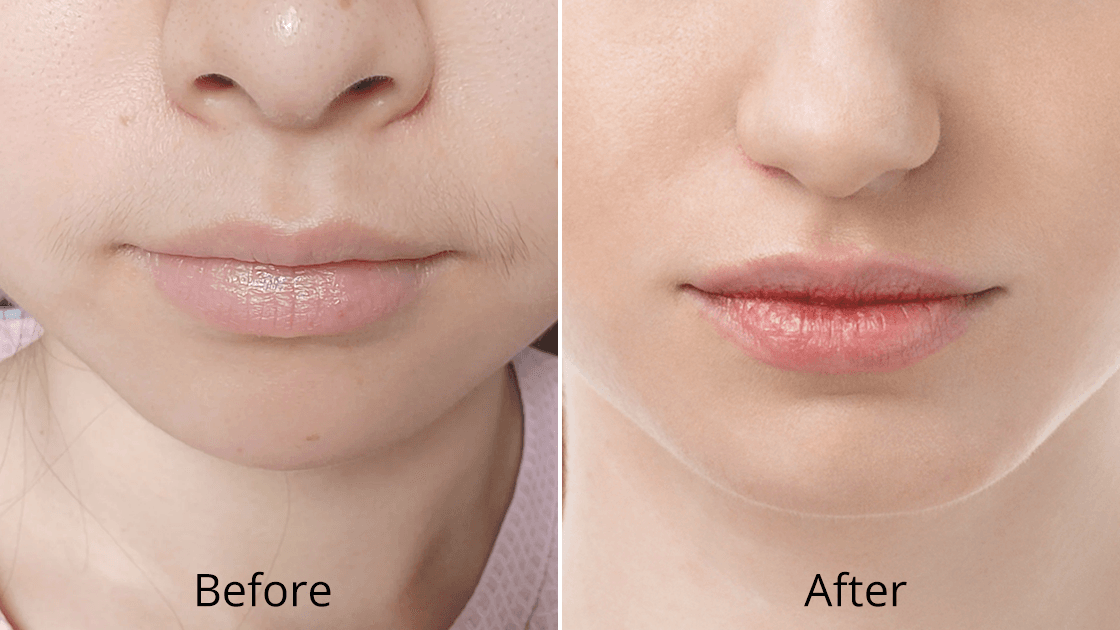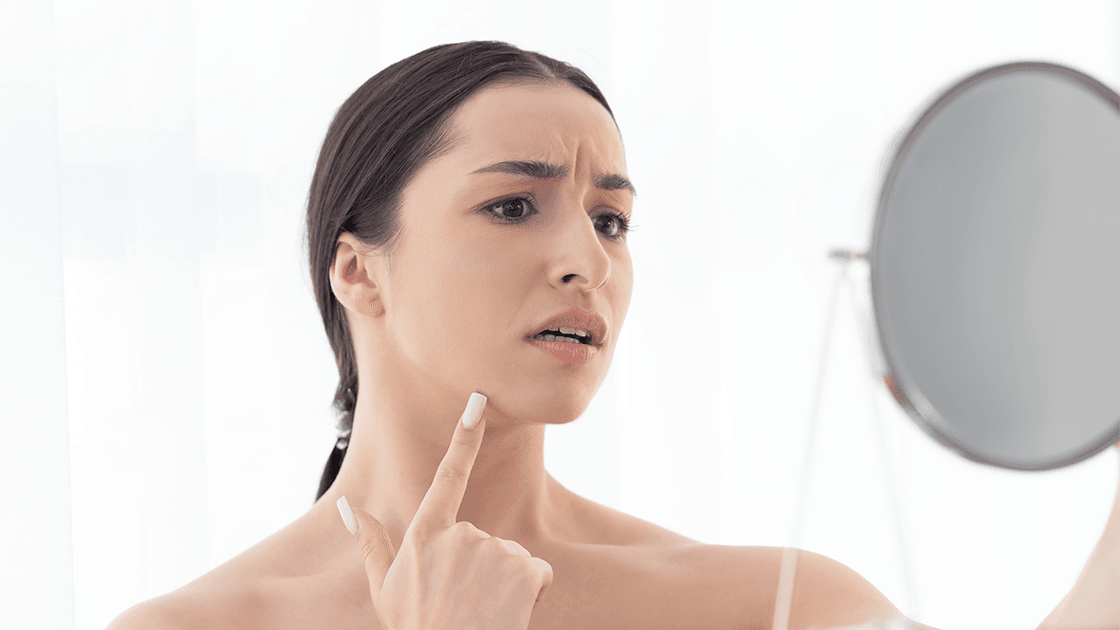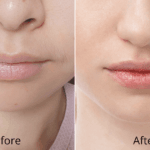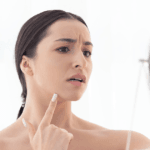The aesthetic medicine landscape has been revolutionized by advanced laser technologies, with pico laser treatments emerging as one of the most sought-after procedures for 피부 회춘, 문신 제거, and pigmentation correction. However, the growing popularity of these treatments has led to an influx of clinics offering pico laser services, creating a challenging environment for consumers to navigate safely and effectively.
1. Introduction: The Rise of Pico Laser Treatments
The emergence of picosecond laser technology represents a significant advancement in dermatological and aesthetic medicine, offering unprecedented precision and efficacy in treating various skin conditions. As these treatments become increasingly accessible, understanding how to select qualified providers becomes crucial for achieving optimal outcomes while maintaining safety standards.
1.1 What Is Pico Laser and Why It’s Trending
Pico laser utilizes a primarily photoacoustic, subsurface remodeling therapy that treats pigment-based dermatological disorders and lesions, clears tattoos, and improves skin appearance across Fitzpatrick skin types. This revolutionary technology operates by delivering ultra-short pulses measured in picoseconds (one trillionth of a second), creating a photoacoustic effect that shatters pigment particles without generating significant thermal damage to surrounding tissues. The mechanism allows for more precise targeting of melanin and tattoo pigments while minimizing collateral tissue damage. The laser pulses achieve a photoacoustic effect aimed straight at the pigment and leave the surrounding tissues untouched, making it suitable for treating various skin types with reduced risk of post-inflammatory hyperpigmentation.
1.2 The Need for Safe and Qualified Clinics
The sophisticated nature of pico laser technology demands specialized knowledge and expertise for safe and effective application. Unlike traditional beauty treatments, laser therapy involves complex interactions between light energy and biological tissues, requiring thorough understanding of laser physics, skin physiology, and potential complications. Inexperienced practitioners may cause severe adverse effects including scarring, hyperpigmentation, hypopigmentation, and permanent tissue damage. Potential side effects from picosecond laser treatment include pain, erythema, oedema, pinpoint bleeding, crusting, blistering, scarring, postinflammatory hyperpigmentation, and postinflammatory hypopigmentation. Proper medical supervision ensures appropriate patient selection, treatment parameter optimization, and complication management, making clinic choice a critical safety consideration for prospective patients.
1.3 Overview: The Cost of Choosing Wrong
Selecting an inappropriate pico laser clinic can result in devastating consequences that extend far beyond financial losses. Poorly executed treatments may lead to permanent scarring, disfigurement, or worsening of the original condition, requiring expensive corrective procedures and prolonged recovery periods. Psychological impacts of treatment failures can include loss of confidence, anxiety, and depression related to altered appearance. Additionally, inadequate treatment may necessitate multiple revision procedures at qualified facilities, significantly increasing overall costs and treatment duration. Legal complications may arise from malpractice situations, creating additional stress and expenses. The investment in researching and selecting qualified providers represents a fraction of the potential costs associated with treatment complications and corrective interventions.
2. Red Flag 1: Lack of Medical Supervision
Medical oversight represents the cornerstone of safe laser therapy delivery, ensuring that treatments are performed within appropriate clinical parameters and that potential complications are promptly recognized and managed. The absence of qualified medical supervision creates significant safety risks that can compromise patient outcomes and welfare.
2.1 Importance of Licensed Medical Professionals in Pico Laser Treatments
Pico Laser Treatment is a safe and FDA-approved procedure, ensuring that patients can trust in its effectiveness and safety, but this safety profile depends entirely on proper administration by qualified professionals. Licensed medical professionals possess the comprehensive training necessary to understand laser-tissue interactions, recognize contraindications, and manage potential complications. Dermatologists and plastic surgeons undergo extensive education in skin physiology, wound healing, and laser physics, enabling them to make informed decisions about treatment parameters and patient suitability. Their medical background allows for proper pre-treatment assessment, including evaluation of medications, medical conditions, and skin characteristics that may affect treatment outcomes. Additionally, medical professionals can prescribe appropriate pre- and post-treatment medications when necessary, and manage complications that may arise during or after treatment sessions.
2.2 Risks of Receiving Laser Therapy Without Proper Oversight
Inadequate medical supervision significantly increases the risk of serious complications and suboptimal treatment outcomes. Non-medical practitioners may lack the knowledge to recognize contraindications such as active infections, autoimmune conditions, or photosensitizing medications that could lead to severe adverse reactions. Improper parameter selection based on insufficient training can result in under-treatment, requiring additional sessions, or over-treatment, causing tissue damage and scarring. Emergency situations may arise during treatment, requiring immediate medical intervention that non-medical staff cannot provide. Furthermore, the absence of medical oversight often correlates with inadequate sterilization protocols, infection control measures, and emergency preparedness, creating additional safety hazards. Post-treatment complications may go unrecognized or be improperly managed, leading to progression of adverse effects and permanent damage.
2.3 How to Verify a Clinic’s Credentials
Thorough credential verification requires systematic investigation of multiple aspects of clinic operations and staff qualifications. Begin by confirming that treatments are performed under the direct supervision of licensed physicians, preferably dermatologists or plastic surgeons with specific laser therapy training. Verify medical licenses through state medical board databases, checking for any disciplinary actions or restrictions. Request information about continuing education and certification in laser therapy, as technology advances require ongoing professional development. Investigate facility accreditation through recognized organizations such as the Joint Commission or American Association for Accreditation of Ambulatory Surgery Facilities. Examine staff qualifications, ensuring that technicians performing treatments possess appropriate laser safety certification and training. Request to see FDA clearance documentation for laser equipment and verify that all devices are properly maintained and calibrated according to manufacturer specifications.
3. Red Flag 2: Vague or Unrealistic Promises
Marketing practices that emphasize unrealistic outcomes or guarantee specific results often indicate inadequate understanding of laser therapy limitations and individual variation in treatment response. Reputable clinics provide honest, evidence-based information about expected outcomes and potential limitations.
3.1 Beware of “Instant Results” and “Permanent Fix” Claims
Legitimate pico laser treatments require multiple sessions to achieve optimal results, with gradual improvement occurring over weeks to months following each treatment. Claims of immediate, dramatic results often indicate misleading marketing practices or inappropriate treatment parameters that may cause harm. Permanent results are rarely achievable for most conditions treated with pico laser, as natural aging processes, sun exposure, and lifestyle factors continue to affect skin appearance over time. Reputable practitioners explain that pigmentation conditions may recur, tattoo removal requires multiple sessions with variable outcomes depending on factors like ink composition and depth, and skin rejuvenation benefits require maintenance treatments. Honest discussions about treatment timelines, number of sessions required, and realistic outcome expectations demonstrate professional integrity and appropriate patient education practices essential for informed consent.
3.2 How Effective Pico Laser Really Works
Fractional picosecond laser has a positive effect on facial photoaging, enlarged facial pores, dyspigmentation, wrinkles, and atrophic scars, but results vary significantly based on individual factors and treatment protocols. The photoacoustic mechanism creates controlled microscopic injuries that stimulate natural healing responses, including collagen remodeling and cellular regeneration. Treatment effectiveness depends on multiple variables including skin type, condition severity, treatment parameters, number of sessions, and individual healing capacity. Tattoo pigment particles embedded within the skin readily absorb the picosecond pulses, creating a photoacoustic effect that shatters them into smaller fragments. The body then absorbs and eliminates these ink or pigmentation fragments. However, complete pigment clearance may require 6-12 sessions or more, and some pigments may prove resistant to laser treatment. Realistic expectations based on clinical evidence and individual assessment are essential for patient satisfaction.
3.3 Spotting Marketing Gimmicks vs Evidence-Based Outcomes
Evidence-based practices rely on peer-reviewed research, clinical studies, and established treatment protocols rather than marketing claims or testimonials. Reputable clinics provide before-and-after photographs that accurately represent typical outcomes, avoiding highly selective or digitally enhanced images that misrepresent results. They discuss potential side effects, contraindications, and limitations honestly, demonstrating transparency and professional integrity. Marketing materials should reference scientific literature, FDA approvals, and established safety protocols rather than making unsubstantiated claims about revolutionary breakthroughs or proprietary techniques. Beware of clinics that emphasize speed, convenience, or cost over safety and outcomes, as these priorities often indicate compromised standards. Legitimate practitioners spend adequate time educating patients about realistic expectations, alternative treatments, and post-treatment care requirements rather than pressuring for immediate treatment decisions.
4. Red Flag 3: Outdated or Unbranded Equipment
The quality, safety, and effectiveness of pico laser treatments depend heavily on the technology platform used, making equipment selection a critical factor in treatment outcomes and patient safety. Substandard or outdated equipment may compromise results and increase complication risks.
4.1 Why Device Brand and Model Matter
Established laser manufacturers invest heavily in research and development, clinical testing, and regulatory compliance to ensure device safety and efficacy. Reputable brands undergo rigorous FDA clearance processes that validate safety profiles and treatment effectiveness for specific indications. These devices incorporate advanced safety features, precise parameter control, and consistent energy delivery that enable predictable treatment outcomes. Quality manufacturers provide comprehensive training programs, ongoing technical support, and regular maintenance protocols that ensure optimal device performance. Conversely, generic or unbranded devices may lack proper safety testing, quality control, and regulatory oversight, potentially compromising patient safety and treatment outcomes. The precision required for safe pico laser delivery demands sophisticated engineering and quality manufacturing standards that are typically associated with established medical device companies.
4.2 Look for FDA-Approved Pico Laser Machines
FDA clearance provides assurance that devices meet stringent safety and efficacy standards through rigorous testing and clinical validation. Modern pico laser systems feature advanced technologies including multiple wavelengths, adjustable pulse durations, and sophisticated delivery systems that optimize treatment parameters for different conditions and skin types. Quality devices offer wavelengths such as 1064nm for deep pigmentation and tattoo removal, 532nm for superficial pigmentation, and fractional delivery systems for skin rejuvenation applications. Advanced safety features include contact cooling, skin impedance monitoring, and automated parameter adjustment based on tissue response. These technologies enable practitioners to customize treatments for individual patients while maintaining safety margins and optimizing outcomes.
4.3 Questions to Ask About Laser Technology and Safety Protocols
Essential inquiries about equipment should focus on specific device models, FDA clearance status, maintenance protocols, and safety features. Request detailed information about wavelengths available, pulse duration specifications, and energy delivery capabilities to ensure the device can appropriately address your specific condition. Inquire about calibration procedures, maintenance schedules, and service records to verify proper device function and safety compliance. Ask about safety protocols including emergency procedures, adverse event management, and staff training requirements. Investigate whether the clinic maintains multiple handpieces and treatment tips to prevent cross-contamination between patients. Verify that protective equipment, including appropriate laser safety eyewear, is provided and properly maintained. Request information about treatment parameter documentation and whether individualized settings are recorded for consistency across multiple sessions. These inquiries demonstrate due diligence and help identify clinics that prioritize safety and quality standards.
5. Red Flag 4: No Personalized Consultation or Skin Assessment
Individualized treatment planning represents a fundamental requirement for safe and effective pico laser therapy, as skin characteristics, medical history, and treatment goals vary significantly between patients. Clinics that skip comprehensive assessments compromise both safety and outcomes.

5.1 The Role of Skin Type in Pico Laser Settings
Shorter pulse durations and enhanced photoacoustic effect help avoid overheating of skin and decreases risk of PIH. In skin of color, a clinical study with the picosecond laser demonstrated a low rate of PIH, at only 4.65% of the lesions. Fitzpatrick skin type classification guides treatment parameter selection, with darker skin types requiring modified settings to prevent post-inflammatory hyperpigmentation and thermal injury. Melanin content affects laser energy absorption, necessitating careful adjustment of fluence levels, pulse duration, and cooling protocols. Individual variations in skin thickness, pigmentation patterns, and healing capacity require customized approaches that cannot be achieved through standardized protocols. Additionally, factors such as sun exposure history, previous laser treatments, and concurrent skincare regimens influence treatment planning and parameter selection. Proper skin assessment includes evaluation of active lesions, scarring patterns, and baseline pigmentation to establish appropriate treatment goals and monitor progress effectively.
5.2 What a Proper Pre-Treatment Consultation Should Include
Comprehensive consultations encompass detailed medical history review, thorough skin examination, realistic expectation setting, and informed consent processes. Medical history assessment should identify contraindications including pregnancy, active infections, autoimmune conditions, photosensitizing medications, and previous adverse reactions to laser treatments. Skin examination involves evaluation of lesion characteristics, surrounding tissue health, and baseline photography for progress monitoring. Treatment planning discussions should address number of sessions required, expected timeline for results, potential side effects, and post-treatment care requirements. Cost transparency includes detailed pricing information for complete treatment courses, not just individual sessions. Alternative treatment options should be discussed to ensure patients make informed decisions about the most appropriate approach for their specific conditions. Adequate consultation time allows for thorough question answering and ensures patients understand all aspects of treatment before proceeding.
5.3 Clinics That Skip This Step Should Raise Alarms
Facilities that offer immediate treatment without proper assessment demonstrate concerning disregard for patient safety and treatment optimization. Rushed consultations or standardized treatment protocols fail to address individual risk factors and contraindications that could lead to serious complications. The absence of detailed skin assessment may result in inappropriate parameter selection, inadequate treatment planning, and suboptimal outcomes. Clinics that emphasize efficiency over thoroughness often prioritize volume over quality, potentially compromising safety standards and patient care. Warning signs include pressure for immediate treatment decisions, reluctance to discuss risks or limitations, and failure to provide adequate time for question answering. Legitimate practitioners understand that comprehensive assessment is essential for safe treatment delivery and will not proceed without proper evaluation. Patients should be wary of any facility that seems more interested in processing treatments quickly rather than ensuring appropriate care and safety protocols.
6. Red Flag 5: Poor Hygiene and Customer Reviews
Infection control standards and patient feedback provide crucial insights into clinic operations, safety protocols, and treatment outcomes. These factors often reveal underlying quality issues that may not be apparent during initial consultations.
6.1 Cleanliness Standards for Laser Clinics
Medical-grade facilities require stringent sterilization and infection control protocols that exceed typical spa or salon standards. All surfaces should be thoroughly disinfected between patients using EPA-approved disinfectants effective against bloodborne pathogens and other infectious agents. Laser handpieces and accessories require high-level disinfection or sterilization according to manufacturer specifications and CDC guidelines. Staff should demonstrate proper hand hygiene, use appropriate personal protective equipment, and follow universal precautions consistently. Treatment rooms should maintain appropriate air filtration, adequate lighting for sterile procedures, and emergency equipment for managing adverse reactions. Single-use items such as treatment tips, protective eyewear covers, and cleaning supplies should never be reused between patients. Proper waste disposal protocols must be followed for contaminated materials, and staff should be trained in bloodborne pathogen safety and emergency procedures. These standards are essential for preventing healthcare-associated infections and ensuring patient safety.
6.2 What Bad Reviews Often Reveal About Safety and Results
Patient reviews provide valuable insights into actual treatment experiences, outcomes, and clinic operations that may not be apparent during initial consultations. Patterns of complaints about inadequate results, unexpected side effects, or poor communication often indicate systemic quality issues. Reviews mentioning infections, scarring, or worsening of treated conditions raise serious safety concerns about sterilization protocols and treatment competency. Comments about rushed treatments, inadequate consultation time, or pressure tactics suggest prioritization of volume over quality care. Multiple reports of hidden fees, poor customer service, or difficulty reaching staff for post-treatment concerns indicate problematic business practices. Conversely, detailed positive reviews that discuss realistic outcomes, thorough care, and professional communication suggest quality service delivery. However, be aware that some clinics may post fake positive reviews or suppress negative feedback, making it important to evaluate review patterns across multiple platforms and consider the specificity and credibility of individual testimonials.
7. Bonus Tips: Choosing the Right Pico Laser Clinic
Beyond avoiding red flags, specific positive indicators can help identify exceptional pico laser providers who prioritize safety, efficacy, and patient satisfaction through comprehensive care protocols and professional excellence.
7.1 Credentials to Look For (Dermatologists, Laser Technicians)
Optimal pico laser providers feature board-certified dermatologists or plastic surgeons with specialized laser therapy training and extensive experience in treating diverse skin conditions. Look for physicians who maintain active memberships in professional organizations such as the American Society for Laser Medicine and Surgery, American Academy of Dermatology, or American Society of Plastic Surgeons. Continuing education credentials demonstrate commitment to staying current with advancing technologies and techniques. Support staff should possess appropriate laser safety certification through recognized programs and demonstrate competency in device operation, safety protocols, and emergency procedures. Additional certifications in specific laser platforms or aesthetic procedures indicate advanced training and expertise. Request information about staff turnover rates, as experienced teams typically provide more consistent and higher-quality care. Verify that all practitioners maintain current CPR certification and emergency response training appropriate for medical facility operations.
7.2 Trial Sessions and Transparent Pricing
Reputable clinics often offer test spots or consultation treatments that allow patients to evaluate their response to pico laser therapy before committing to full treatment courses. These trial sessions help identify potential adverse reactions, assess individual healing patterns, and verify treatment comfort levels. Transparent pricing includes detailed cost breakdowns for complete treatment courses, not just individual sessions, allowing patients to budget appropriately for achieving desired outcomes. Financing options and package deals should be clearly explained without hidden fees or pressure tactics. Quality providers discuss insurance coverage possibilities for medical indications and provide necessary documentation for reimbursement when applicable. Avoid clinics that require large upfront payments or use high-pressure sales tactics to encourage immediate decisions. Legitimate businesses understand that quality treatments represent significant investments and allow adequate time for decision-making and financial planning.
7.3 Ask These 3 Questions Before Booking
First, inquire about the specific device model and ask to see FDA clearance documentation, ensuring the equipment is appropriate for your condition and skin type. Request detailed information about wavelengths available, pulse durations, and safety features to verify advanced technology capabilities. Second, ask about the treating physician’s experience with your specific condition, including number of similar cases treated, typical outcomes, and complication rates. Request to see before-and-after photographs of cases similar to yours, and ask about factors that might affect your individual results. Third, inquire about post-treatment care protocols, follow-up procedures, and policies for managing complications or unsatisfactory results. Understanding support systems and commitment to patient care provides insight into clinic quality and professionalism. These questions help evaluate technical competency, clinical experience, and patient care standards essential for safe and effective treatment outcomes.
8. Conclusion: Trust Your Skin to the Right Hands
The decision to undergo pico laser treatment represents a significant investment in your appearance and well-being, making provider selection one of the most critical factors in achieving safe, effective outcomes. The sophisticated nature of picosecond laser technology demands expertise, quality equipment, and comprehensive safety protocols that are only available from qualified medical professionals operating legitimate facilities.
8.1 Red Flags Are Warning Signs, Not Just Minor Flaws
Each red flag discussed represents a serious safety concern that could compromise treatment outcomes and endanger patient welfare. The absence of medical supervision eliminates essential safety oversight and emergency response capabilities necessary for managing complications. Unrealistic promises indicate inadequate understanding of treatment limitations and may reflect misleading business practices. Substandard equipment compromises both safety and efficacy, potentially causing harm while failing to achieve desired results. Inadequate consultation and assessment procedures eliminate individualized care essential for optimal outcomes and safety. Poor hygiene standards create infection risks and indicate broader quality control deficiencies. These warning signs should be considered disqualifying factors rather than minor concerns, as they often indicate systemic problems that extend beyond single issues.
8.2 A Good Pico Laser Clinic = Safety, Results, and Peace of Mind
Exceptional pico laser providers blend cutting-edge tech, clinical expertise, and patient-first care to ensure safe, effective results. Rather than rushing high volumes, they focus on thorough consultations and personalized treatment plans. Top clinics use FDA-approved devices, regularly maintained for safety. Qualified professionals follow strict protocols, emphasizing transparency, realistic outcomes, and ongoing support. Ethical practices and patient well-being are at the heart of their approach. Choosing such a provider may take effort, but it’s a smart investment—far better than risking complications or unsatisfactory results from subpar care. Research credentials, ask questions, and don’t settle. Your skin deserves expert attention.








